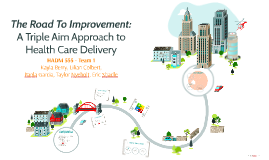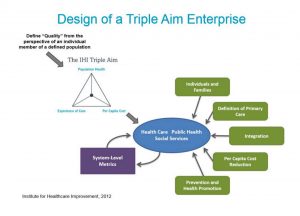

All of this is underpinned by a data-driven technology strategy to provide highly coordinated care for each patient close to home. With fewer patients per physician, our patients experience continuity of care and better outcomes, and our primary care physicians are supported by social, nutritional and behavioral care providers right in the clinic. We provide our patients easy and efficient access to care through comfortable, neighborhood clinics as well as telehealth visits and patient-provider relationships. Our interdisciplinary, team-based approach is proactive and coordinated. In our medical clinics, we provide comprehensive primary care for senior adults with traditional Medicare and Medicare Advantage plans, focused on delivering the Triple Aim of improved quality, better patient experience and lower total cost of care. We are putting the relationship between patient and physician at the center of a value-based model focused on outstanding patient experience, improved access and better outcomes. You can also contact a Care Innovations representative for further information.ArchWell Health is re-imagining the practice of primary care. We invite you to learn more about the advantages of telemedicine and RPM programs at the Care Innovations RPM Academy, a series of exclusive, informative, bite-size videos designed to shed light on these increasingly important topics. “So, we see very high satisfaction rates, very high engagement rates." “Patients feel very much like they are being cared for by whomever it is that's providing that remote patient management model to them. "Remote patient management is so far above and beyond the normal standard of care in that these patients are wildly enthusiastic,” sums up Care Innovations CCO Julie Cherry (RN, MSN). 100% overall satisfaction rate with the RPM service.97% satisfaction with the ability to improve and manage one’s own healthcare needs.100% satisfaction with the quality of care.97% satisfaction with nurse availability.For example, the patient care experience from the 2013 GE Aviation Telehealth Study for Patients with Diabetes Mellitus yielded a satisfaction rate that was close to 100 percent across the board, including: “The opportunity to see what's really going on with the patient and intervene directly benefits the healthcare system and directly - we have clinical results to show - that it can lower costs, improve health outcomes, and improve quality of care," adds Karissa Price-Rico.Īnd there’s data to back up just how much RPM programs, like Care Innovations’ own Health Harmony platform, can help accomplish these goals. RPM reduces costs by moving the model of care from reactive to proactive interventions.

"When we find the patient engages on a daily basis, it really leads to a better outcome and moves them toward a self-management basis, improving their condition.” “RPM affects the second aim of healthcare, patientsatisfaction, by giving them the chance to interact on a daily basis," says Care Innovations CEO Randy Swanson.

RPM improves the care experience by providing daily interaction with patients, thereby improving quality of life and keeping patients in their home."There's lots of demonstrated evidence that remote patient management programs can improve quality of life, allow people to live in their home (which is where everybody wants to be), and improve their health outcomes,” explains COO Marcus Grindstaff in the video. RPM improves health by driving patient adherence, self-management and health outcomes.Indeed, the specific benefits offered by RPM seem remarkably well-aligned with the needs of the triple aim of healthcare.Īccording to the Care Innovations team of telehealth experts, via an exclusive video from the RPM Academy, those benefits break down as follows: That interconnectivity - combining quality of care with satisfaction and reduced costs - also happens to be central to the success of remote patient management (RPM). “Changes pursuing any one goal can affect the other two.” How RPM Helps Achieve the ‘Triple Aim of Healthcare’ However, the components of this three-fold goal “are not independent of each other,” the authors explain. Virtually every aspect of healthcare - from technology to microbiology - has now embraced the need to achieve the “triple aim.” In the years since, the industry has since been working to harness this concept to improve the state of healthcare in the United States. In their words, the healthcare triple aim is to: Health, care and cost: Three simple words that sum up the “triple aim of healthcare,” as coined by the authors of a 2008 Health Affairs study on improving America’s healthcare system.


 0 kommentar(er)
0 kommentar(er)
